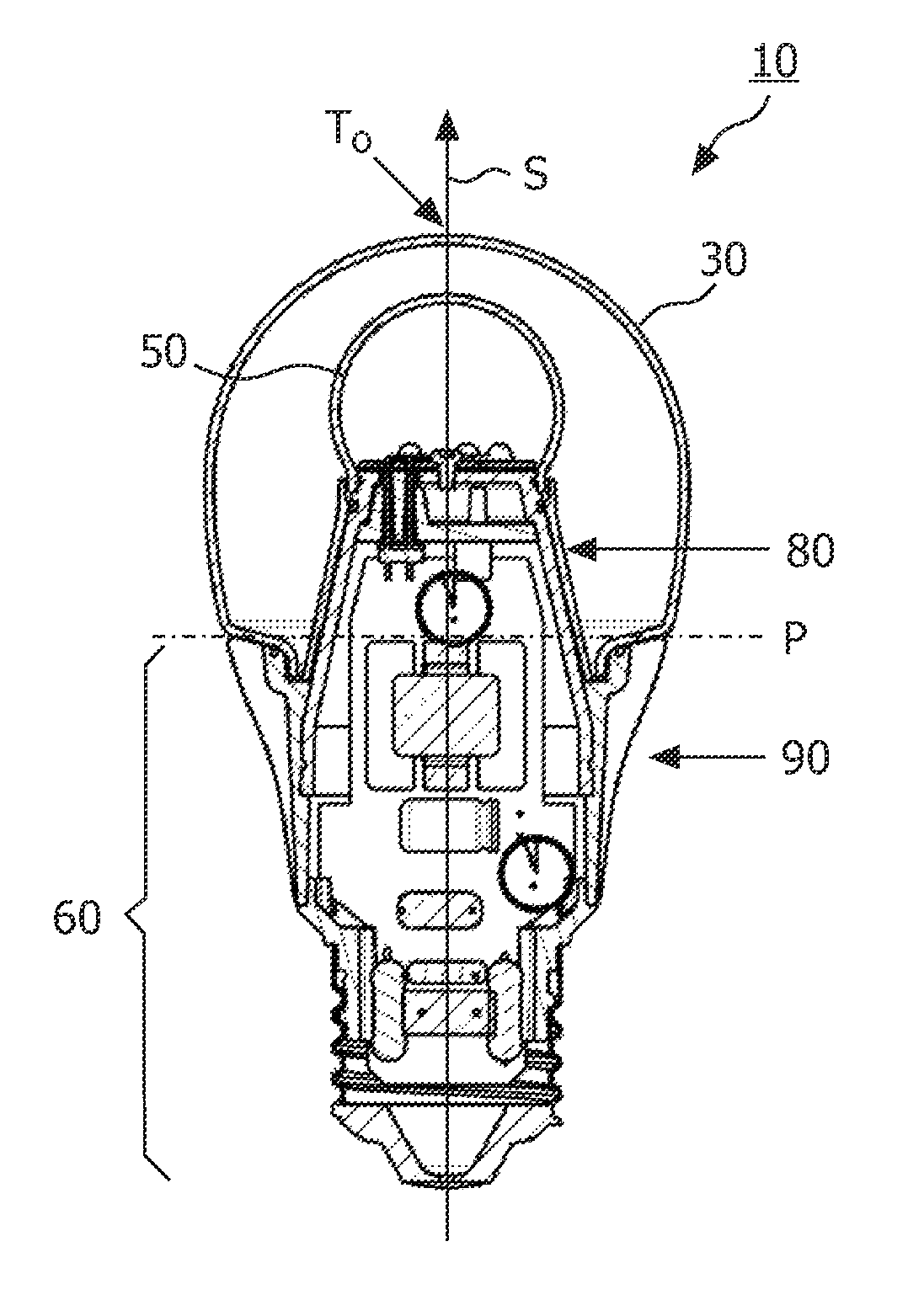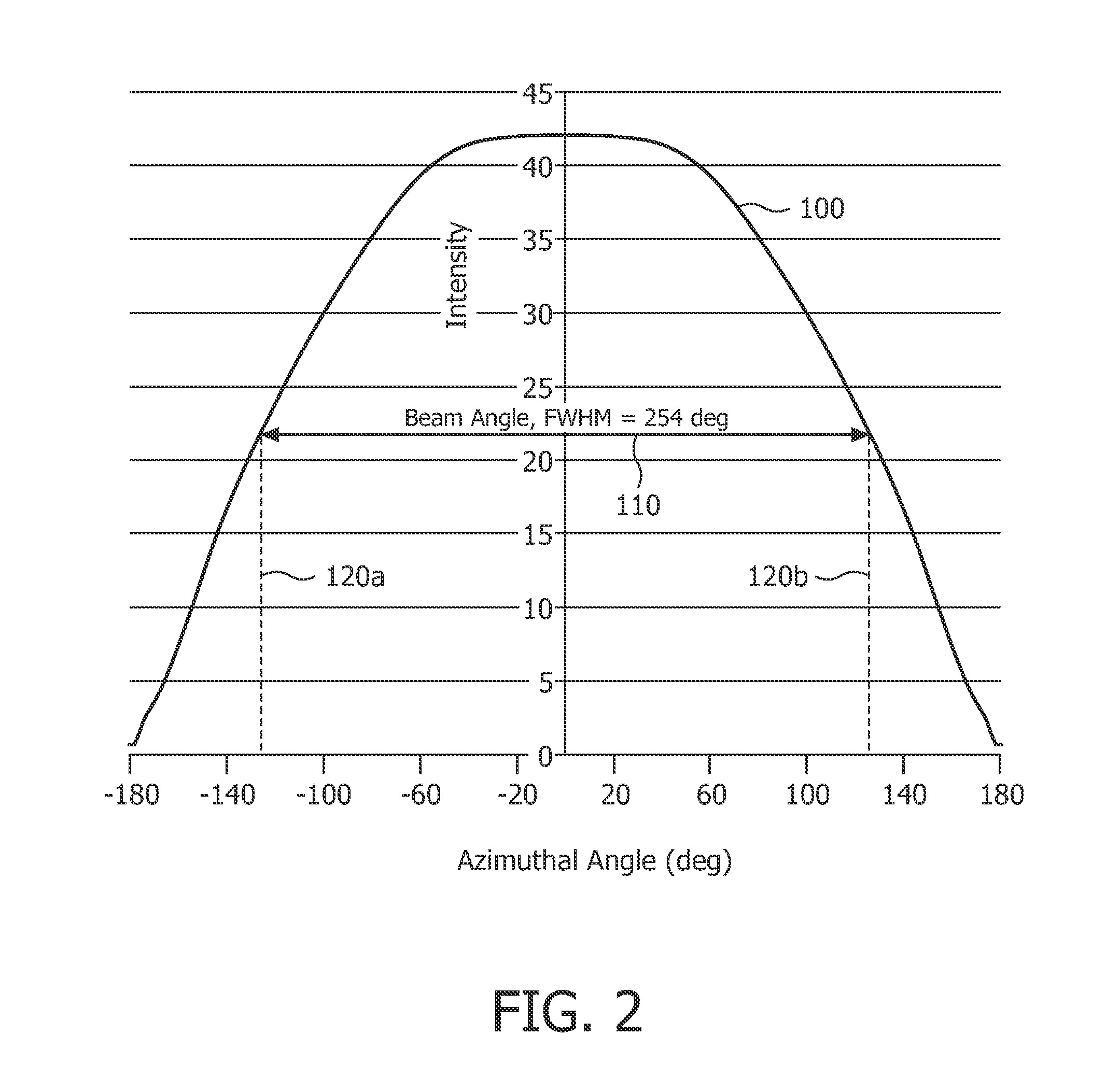Light source comprising a light emitter arranged inside a translucent outer envelope
a technology of light emitter and outer envelope, which is applied in the direction of light source semiconductor devices, lighting and heating apparatus, coatings, etc., can solve the problems of insufficient wide emission profile in a plane perpendicular to the base of the led, relative low efficiency, etc., to improve efficiency, reduce scattering losses, and enhance system efficiency
- Summary
- Abstract
- Description
- Claims
- Application Information
AI Technical Summary
Benefits of technology
Problems solved by technology
Method used
Image
Examples
Embodiment Construction
[0052]FIG. 1 shows a side-view of a light source 10 according to the invention. The light source 10 comprises a light emitter 20 which is positioned inside a translucent outer envelope 30. The light emitter 20 comprises a light emitting device 40 (see FIG. 4) which is at least partially surrounded by a translucent inner envelope 50 comprising a diffuser (not indicated) for diffusing at least a part of the light emitted by the light emitting device 40. The diffuser may be integrated in the wall of the inner envelope 50 or may be applied as a layer to an inner wall or an outer wall of the inner envelope 50. A diameter di of the translucent inner envelope 50 is smaller than a diameter do of the translucent outer envelope 30. The translucent outer envelope 30 is connected to a base 60 which is usually not translucent. Furthermore, the translucent outer envelope 30 comprises a symmetry axis S. In FIG. 1 also an imaginary base-plane P is indicated via a dash-dotted line. This imaginary ba...
PUM
| Property | Measurement | Unit |
|---|---|---|
| angles | aaaaa | aaaaa |
| width | aaaaa | aaaaa |
| peak wavelength | aaaaa | aaaaa |
Abstract
Description
Claims
Application Information
 Login to View More
Login to View More - R&D
- Intellectual Property
- Life Sciences
- Materials
- Tech Scout
- Unparalleled Data Quality
- Higher Quality Content
- 60% Fewer Hallucinations
Browse by: Latest US Patents, China's latest patents, Technical Efficacy Thesaurus, Application Domain, Technology Topic, Popular Technical Reports.
© 2025 PatSnap. All rights reserved.Legal|Privacy policy|Modern Slavery Act Transparency Statement|Sitemap|About US| Contact US: help@patsnap.com



